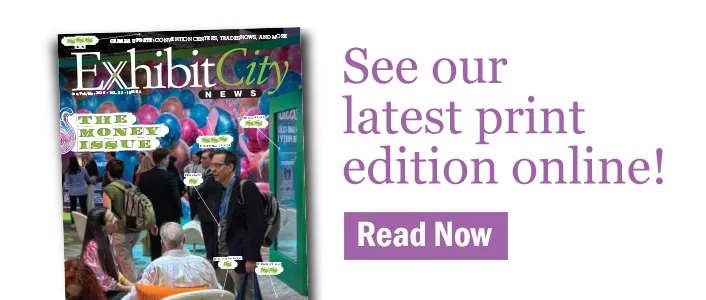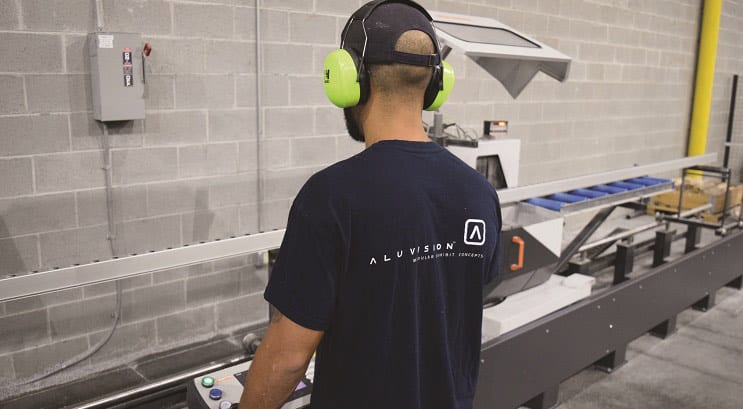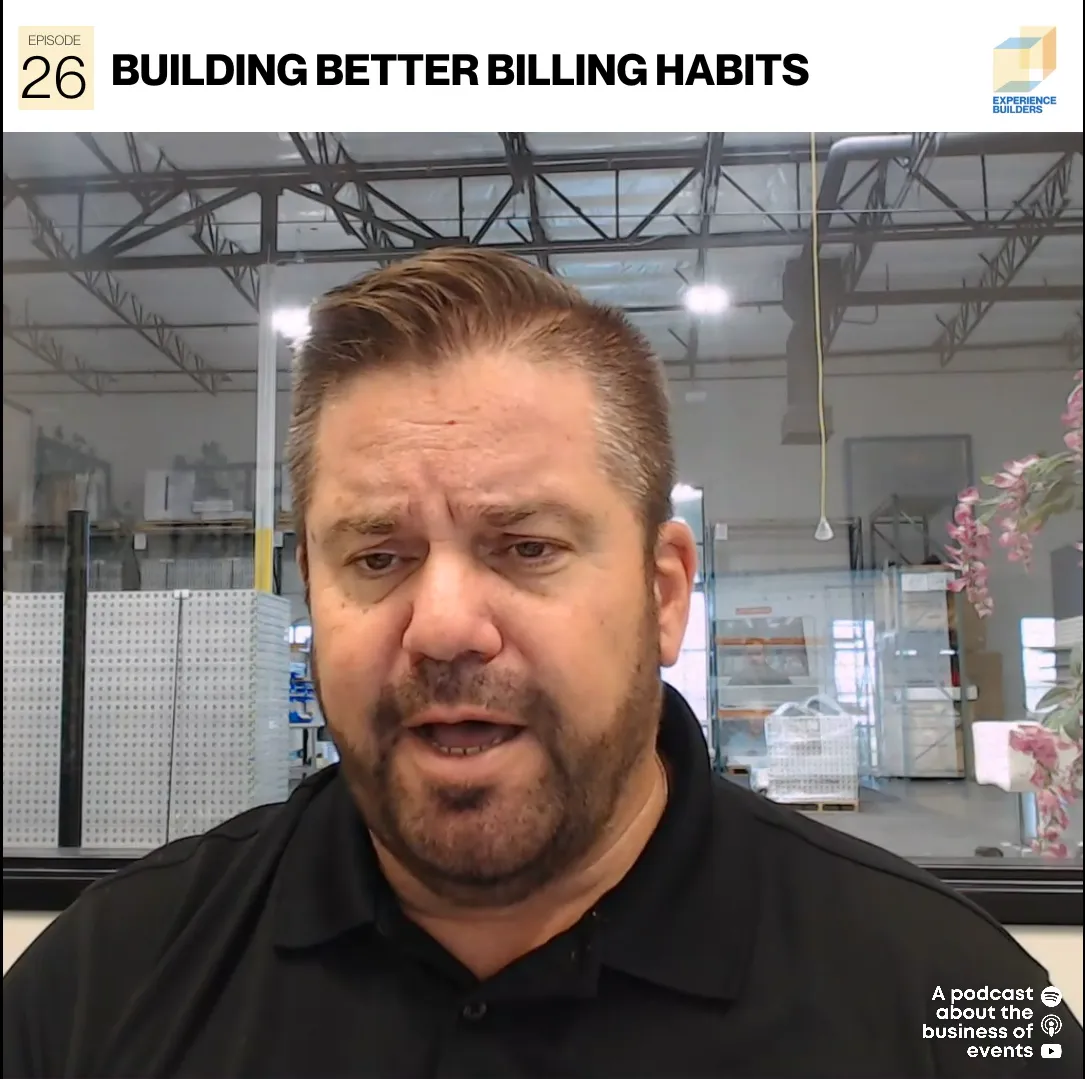by Lesley Martin
In 1968, Hans Staeger introduced the extruded Octanorm Exhibition Stand System at EuroShop in Düsseldorf. At that time, most exhibits were heavy wooden structures, and set-up required a crew with carpentry skills and tools. In the 1990s, inspired by what he saw as a trend overseas, Mick Parrott, founder of Highmark TechSystems, a U.S.-based leader in modular properties and years ahead of itself in green practices, made a compelling and early case for modular exhibit properties, multi-level exhibits and the practice of renting rather than owning exhibits. Since then, they have evolved to become versatile, modular systems that simplify set-up and enhance reusability.
No Metals Compare to Aluminum and Titanium
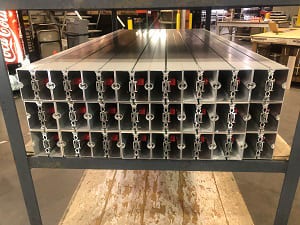 A lightweight, strong and malleable metal, aluminum is extremely versatile. It can be bent into shapes and maintain its shape in extreme conditions (such as being launched into space). Norm Friedrich, president/ CEO of Octanorm says, “As an engineer, it’s the mechanical properties of extruded aluminum that continue to amaze me. Based on the weight to strength ratio, there is no other material that compares.” In the macroeconomy, aluminum is plentiful: soda cans, mobile devices, aircrafts and automobiles are some of the products that contain aluminum. In 2012, 1.9 million tons of aluminum were produced for containers and packaging alone, and another 1.7 million tons went to appliances, vehicle parts and other durable goods, according to the Environmental Protection Agency.
A lightweight, strong and malleable metal, aluminum is extremely versatile. It can be bent into shapes and maintain its shape in extreme conditions (such as being launched into space). Norm Friedrich, president/ CEO of Octanorm says, “As an engineer, it’s the mechanical properties of extruded aluminum that continue to amaze me. Based on the weight to strength ratio, there is no other material that compares.” In the macroeconomy, aluminum is plentiful: soda cans, mobile devices, aircrafts and automobiles are some of the products that contain aluminum. In 2012, 1.9 million tons of aluminum were produced for containers and packaging alone, and another 1.7 million tons went to appliances, vehicle parts and other durable goods, according to the Environmental Protection Agency.
Aluminum’s Lightweight Benefits
In exhibitions, the costs of shipping and drayage services are directly correlated with the weight of exhibit properties. Those services can eat up a quarter of the exhibitor’s budget. Thus, lightweight solutions are prized. And when it comes to aluminum, the weight differences are significant. Stephan De Mulder, senior account director of Aluvision Inc., says, “Aluminum frame systems used to build walls are easily about five times lighter than wooden wall panels.” Robert Laarhoven, president, beMatrix USA, says that “Aluminum frames also have an advantage over wood in that putting them in a trailer from a warm warehouse during a Minneapolis winter, crossing the plains in a trailer that is below freezing, crossing the desert heat soaking it, and changing humidity in ways that would be a nightmare for someone with curly hair would be devastating for the longevity of wooden framed panels, but aluminum takes it in stride.” Lightweight systems save on shipping and drayage and require fewer labor hours. One installer can handle a lightweight system, whereas heavy properties require more crew members and result in higher labor costs.
Malleability of Aluminum
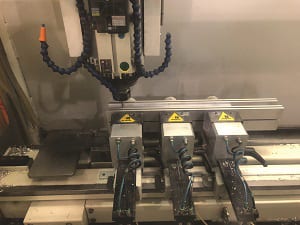 Friedrich continues, “Aluminum is also malleable and ductile, which allows it to be formed into various shapes while maintaining its strength.” To create aluminum pieces that fit together into a system, forms are created by the aluminum extrusions process. According to Bonnell Aluminum’s website, “Extrusion is defined as the process of shaping material, such as aluminum, by forcing it to flow through a shaped opening in a die. Extruded material emerges as an elongated piece with the same profile as the die opening.” To witness a similar process, watch kids play with the Play-Doh Pumper Factory. First, they’ll take a solid chunk of soft Play-Doh and pump the Play-Doh through the toy. Out flows a continuous, elongated piece shaped by the opening’s profile. If the opening is a simple round hole, the Play-Doh “extrudes” as long, spaghetti- like Play-Doh.
Friedrich continues, “Aluminum is also malleable and ductile, which allows it to be formed into various shapes while maintaining its strength.” To create aluminum pieces that fit together into a system, forms are created by the aluminum extrusions process. According to Bonnell Aluminum’s website, “Extrusion is defined as the process of shaping material, such as aluminum, by forcing it to flow through a shaped opening in a die. Extruded material emerges as an elongated piece with the same profile as the die opening.” To witness a similar process, watch kids play with the Play-Doh Pumper Factory. First, they’ll take a solid chunk of soft Play-Doh and pump the Play-Doh through the toy. Out flows a continuous, elongated piece shaped by the opening’s profile. If the opening is a simple round hole, the Play-Doh “extrudes” as long, spaghetti- like Play-Doh.
The aluminum extrusion process begins by heating the metal to 750-900 degrees Fahrenheit. Malleable but still solid, the material is transferred to a press that forces it into a container. Once in the container, pressure increases and forces the aluminum through an opening. From the other side a length of consistently shaped aluminum extrusion emerges.
In the tradeshow industry, extruded pieces are assembled to create frames and interior systems (such as shelving, displays, counters and more). Each company’s patented systems and quality output set them apart. Laarhoven says that another consideration for exhibiting companies is “each manufacturer’s engineering capabilities, innovations and R&D, support services and customer service,” adding, “Remember, when the iPod was introduced there were already 50 MP3 players on the market. It was partly the Apple magic, but mostly iTunes and the advantages that additional range of features and services provided that truly made the product valuable.”
Aluminum System Advancements
Although systems were revolutionary in the 20th century, the early iterations were unrefined. Shiny aluminum frames peeked through the graphics, giving the exhibit an unfinished look. The cookie cutter frames limited the creativity options for exhibit design. And for installers, the systems were complicated to learn. That’s all changed in recent years as providers of aluminum extrusions are offering additional support and more sophisticated product lines. Debbie Parrott, president, Highmark TechSystems, points to her company’s recent innovation: extruded aluminum outdoor structures. “The idea of an extruded outdoor system initially seemed simple: just take our ExpoDeck outdoors. The amount of engineering that went into this new product was daunting, but we developed a structure that can withstand weather, support graphics, and can be a multi-story system with a standard footprint of 16’ x 16’,” says Parrott. “It can be completely enclosed and is totally customizable. Like our other Highmark products, the outdoor deck can be expanded to go up or to go out.”
“Until about 10 years ago, the word ‘systems’ had a negative connotation because they were seen as bulky and not finished. Although we still see those systems out there, most other systems have developed a way to hide the system,” says De Mulder. “For everything we develop, we try to hide the structure as much as possible so that the end user gets that custom look without seeing a lot of aluminum. This has modernized the concept of extrusions and aluminum exhibits in general.”
Reusability Reduces Waste
Companies have refined their own patented systems for reusability, modularity and versatility, prolonging the life of the design possibilities. Until recently, “custom” exhibits were defined as wood products with limited modularity. The design and layout of that type of “custom” build was basically limited to the original, with additional components built to extend usability. If the exhibiting company underwent a rebrand, initiated a new campaign, or otherwise needed to refresh their exhibit properties, they built new.
Today “custom” means that the exhibit structure delivers a unique message and experience. The modularity and versatility of frames allow them to be interchangeable like Legos. In addition to offering so many design possibilities and graphics-friendly features, extruded aluminum systems also offer sustainability as an advantage. A quality frame system that is properly maintained can last for decades while “built” exhibits eventually end up in the landfill.
“Aluminum can be recycled over and over again without loss of quality. In fact, recycled aluminum has the same quality as new aluminum. That already makes it more ecological,” explains Claire Wyckaert, sales manager west coast for Aluvision. According to the Aluminum Association, recycling has kept in use about 75 percent of all aluminum ever made. beMatrix USA is passionate about sustainability and respect for planet Earth. As co-owner Edwin Van der Vennet wrote last year after a beMatrix employee witnessed the aftermath of a build and burn show in China: “The solution is very obvious. ‘System Building Solutions’ are key. They favor our planet and our offspring.”
Faster Set-up
Precision and consistency in the cut parts ensure that the pieces of the system fit together seamlessly. The ease of install reduces set-up time, which can lead to significant cost savings on labor. Says beMatrix’s Laarhoven, “The extreme reconfigurability of today’s systems also make them ideal for rental programs. An owned exhibit may go to several shows and spend the rest of the year in a warehouse, but rental properties are ‘on the road’ almost constantly, greatly reducing the amount of underutilization and reducing the overall waste of resources in yet another way. In fact, beMatrix b62 frames designed to function as walls, floors or ceilings, eliminating the need for dedicated flooring and overhead systems and even further reducing specialized, underused inventory.”
Aluminum Tariffs
In June 2018, a 10 percent tariff on aluminum went into effect. In the news, the beer industry has earned the most attention, as this directly affects consumers. Colorado’s Oskar Blues Brewery told the Denver Post that the new tariff means every case of canned beer could cost them 20 to 24 cents more to produce, raising their annual expenses by $475,000 to $575,000. For the tradeshow aluminum systems providers, the potential impact of the tariffs is currently not an issue. Octanorm’s Friedrich says, “The recent tariff on aluminum pertains to the base metal or ingot, which only has minimal effect on us. Aluminum is a man-made alloy containing other metals, which are not subject to the tax.” The early iterations of extrusion systems were bulky and cookie cutter, not giving end-clients the impact of a custom exhibit. Over the years, aluminum frame systems have evolved to modular, versatile and reusable systems that offer significant benefits.
This story originally appeared in the September/October issue of Exhibit City News, p. 42-44. For more pictures and original layout, visit http://issuu.com/exhibitcitynews/docs/ecnflipbook_septemberoctober_2018_o?e=16962537/64174552



